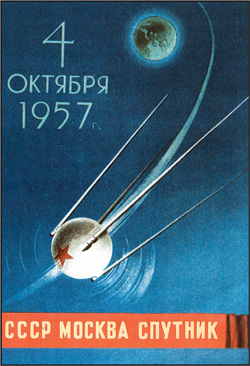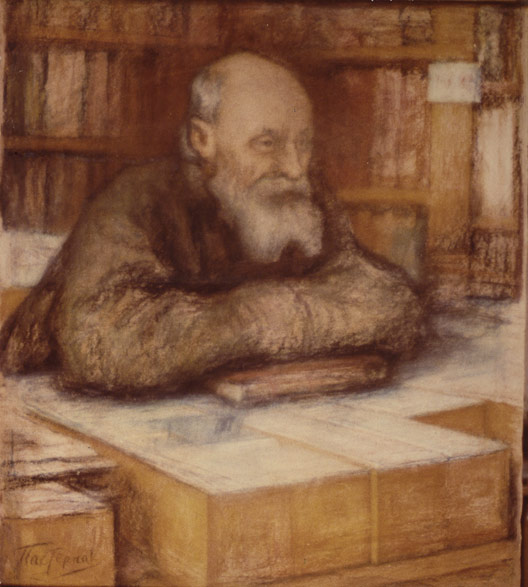How Dreams of Spacefaring Zombies Led to the Launch of Sputnik
Credit to Author: Becky Ferreira| Date: Wed, 04 Oct 2017 15:00:00 +0000
Early on a Saturday morning 60 years ago, the millennia-old dream of spaceflight came true as Sputnik 1 rocketed into orbit to become Earth’s first human-made satellite. The mission notoriously shocked the world and minted a new era of human exploration, but what’s less well-known is that Sputnik arose, in part, from a 19th century dream to raise the dead. Really.
On this day in 1957, the 184-pound spacecraft departed from a modest Kazakh launchpad that would later evolve into the famous Baikonur Cosmodrome, currently the only spaceport on Earth capable of transporting humans to the International Space Station (ISS). The local time of liftoff was 1:28 AM on October 5, but for people living in North American, European, and Western Russian time zones, the launch occurred on Friday, October 4, and history has memorialized that date as Sputnik’s anniversary.

Sputnik triggered the Space Race, a geopolitically intense and technologically productive phase of the Cold War, which climaxed with NASA’s six Apollo Moon landings from 1969 to 1972. The Sputnik crisis, a period of Western anxiety about the clear Soviet lead in spaceflight—and its reconnaissance and military implications—jumpstarted American defense, science, and education initiatives that profoundly impacted the course of world events over the subsequent six decades.
This explains why the satellite’s flight is usually framed as the starting shot of a new era, syncing up with the “space race” metaphor. Sputnik is remembered for the world it made, not the world that made it. But the run-up to this mission is as fascinating as its fallout, and weaves together the stories of visionary thinkers against the tumultuous backdrop of imperial Russia’s transition into the communist USSR.
As a bonus, if you trace Sputnik’s origins back far enough, you get spacefaring zombies. It turns out that resurrecting dead people, and sending them to colonize alien planets, was a motivating factor in the development of Russian spaceflight. It began with the futurist philosopher Nikolai Fyodorov (often anglicized as “Fedorov”), who was born in 1829 in the Tambov province of imperial Russia.

Fyodorov believed that humanity needed to be liberated from death to achieve perfection, a view shaped by his Russian Orthodox Christian faith, especially its resurrection stories. Like other transhumanists who have envisioned immortality, Fyodorov speculated about ways to extend lifespans indefinitely, but he also took the premise a lot farther.
It wasn’t enough to prevent the death of every living person. Every dead person also had to be brought back to life so they could rejoin their descendents in a utopian future. He called this mission humanity’s “common task.”
In other words, Fyodorov believed that “humanity’s moral task was to emulate Christ and make bodily resurrection possible,” writes Asif Siddiqi, a space historian based at Fordham University, in his book The Red Rockets’ Glare. “Mass resurrection would finally eliminate the artificial boundaries among the ‘brotherhood’ of humanity, that is, between the previous and current generations.”
It’s a party on Earth, and everyone is invited, including the dearly departed. To fulfill this task, Fyodorov argued that space travel would have to be invented, for two reasons. First, he thought elemental compounds of decomposed bodies would have made their way off the planet over thousands of years of human history. In order to reassemble our ancestors’ bodies, we’d have to go out looking for all their disparate parts.
Second, he recognized that mass resurrection would make Earth too crowded, so spaceflight was necessary for all these reanimated corpses and their living relatives to find new homes among the planets and stars.
If that all seems a bit weird, keep in mind that belief in space exploration was itself a pretty “out there” notion back in the day, and Fyodorov is far from the only figure who intermixed divine inspiration and mystic traditions with rocket science.
Robert Goddard, the foundational figure of American rocketry, pursued his calling after experiencing a vision of Mars missions while pruning his backyard cherry tree. Hermann Oberth, the German rocket pioneer, believed UFOs were frequently visiting Earth during the 1950s.
And who could forget Jack Parsons, one of the principal founders of NASA’s Jet Propulsion Laboratory, who fell in with the English occultist Aleister Crowley and Scientology founder L. Ron Hubbard, and tried to summon a goddess named Babalon before mysteriously dying in a lab explosion. In other words, some degree of magical thinking is hardly rare in spaceflight history.
Read More: Crawling Back to the Alleged Hell Portal of NASA’s Occult Origins
Fyodorov, for his part, was widely influential, known to many contemporary luminaries like Leo Tolstoy, Vladimir Solovyov, and Fyodor Dostoevsky. During his adolescence, Konstantin Tsiolkovsky, an autodidact rocket scientist honored as the father of Russian spaceflight, visited Fyodorov to discuss his futurist ideas. Fyodorov is also considered to be the progenitor of the Russian cosmism movement, which dovetailed with the waxing utopian philosophies that formed the rhetorical backbone of the Bolshevik Revolution 100 years ago, in 1917.
According to Siddiqi, Fyodorov’s “idea of ‘regulating nature’ by taking absolute control over it resonated deeply with the scientific and technical intelligentsia in the early post-Revolutionary era who, infected by Bolshevik claims of remaking the social universe, were also interested in remaking the natural one.”
From his direct mentoring of a young Tsiolkovsky to the broader impact of his dazzling aspirations on Russian culture, Fyodorov was an instrumental promoter of spaceflight, even if it was just as a stopgap technology supporting his dream of an immortal interplanetary utopia. The waves that he made during his life, which ended in 1903, were part of the rising tide that lifted Sputnik into space 60 years ago today.
Get six of our favorite Motherboard stories every day by signing up for our newsletter.